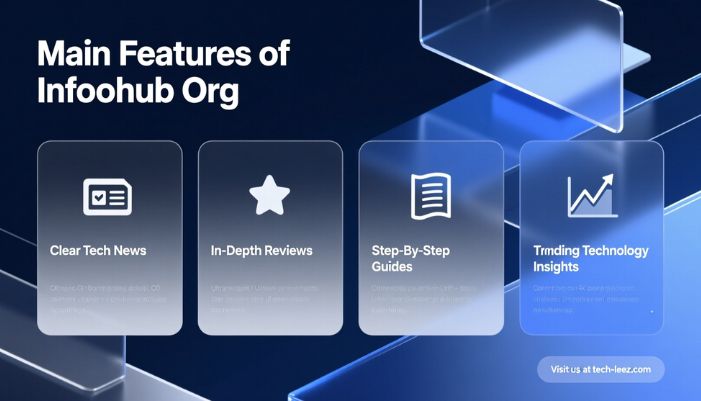
Introduction to dnoga1b2c3d4
In the contemporary landscape of technological advancements, dnoga1b2c3d4 emerges as a groundbreaking paradigm that warrants attention. Defined as a multidimensional framework designed to streamline processes and foster innovation, dnoga1b2c3d4 integrates various aspects of modern technology, making it highly relevant in today’s digital environment. Its origins can be traced to the increasing demand for more efficient systems that align with rapid developments in artificial intelligence, machine learning, and data analytics.
The development of dnoga1b2c3d4 has been influenced by a myriad of factors, including the need for scalability, adaptability, and improved interoperability across diverse platforms. As organizations strive to enhance their operational efficiencies, dnoga1b2c3d4 provides a structured approach that encompasses several key concepts such as modularity, real-time data processing, and user-centric design. This innovative model serves as a bridge between traditional methodologies and modern requirements, enabling organizations to respond promptly to changing market dynamics.
At its core, dnoga1b2c3d4 is not merely a theoretical construct; it is a practical solution that embodies the principles of flexibility and responsiveness. As industries increasingly adopt digital transformation strategies, understanding the intricacies of dnoga1b2c3d4 becomes essential. By dissecting its core components, stakeholders can uncover how it enhances decision-making processes and facilitates seamless integration of technologies. This introduction lays the groundwork for a comprehensive exploration of dnoga1b2c3d4, highlighting its significant role in shaping future innovations. The subsequent sections will delve deeper into the mechanisms and applications of this pioneering framework, elucidating its transformative potential across various sectors.
Applications and Benefits of dnoga1b2c3d4
The innovative technology known as dnoga1b2c3d4 has garnered significant attention across various sectors due to its versatile applications and benefits. One prominent application resides in the manufacturing industry, where it enhances production processes by streamlining operations. For instance, companies that have adopted dnoga1b2c3d4 have reported a notable reduction in waste and increased machinery efficiency. This not only optimizes resource usage but also leads to substantial cost savings over time.
In the realm of healthcare, dnoga1b2c3d4 is revolutionizing patient management systems. By integrating this approach, healthcare providers can analyze patient data more efficiently, thus improving decision-making and patient outcomes. Case studies demonstrate that hospitals implementing dnoga1b2c3d4 have witnessed a decrease in patient wait times and an increase in the accuracy of diagnoses, ultimately enhancing the quality of care delivered.
Additionally, the application of dnoga1b2c3d4 extends to the logistics sector, where it is employed to optimize supply chain management. Companies utilizing this method streamline their inventory processes and enhance tracking capabilities. The result is a more agile supply chain that can swiftly adapt to changing market demands while simultaneously cutting costs and improving customer satisfaction.
Furthermore, another area benefiting from dnoga1b2c3d4 is the finance industry, where it enhances data security and efficiency in transaction processing. By adopting this technology, financial institutions can better safeguard sensitive information against cyber threats while ensuring seamless operations. The integration of dnoga1b2c3d4 not only fosters trust among clients but also positions these organizations as leaders in financial innovation.
In conclusion, the diverse range of applications and the myriad benefits provided by dnoga1b2c3d4 make it an essential tool for organizations seeking improved efficiency, cost-effectiveness, and enhanced performance across various industries.
Challenges and Considerations in Implementing dnoga1b2c3d4
The adoption of dnoga1b2c3d4 presents several challenges that organizations must navigate to ensure successful implementation. One of the primary hurdles is integration with existing systems. Organizations often have legacy systems that may not easily accommodate new technologies. Compatibility issues could arise, demanding significant resources for software revisions or adaptations. In addition, organizations may require enhanced training for their workforce to operate and maintain the new system effectively, which can pose a logistical challenge.
Another considerable obstacle is resistance to change among employees. Individuals often feel apprehensive about new systems due to fear of the unknown or potential job displacement. This resistance can slow down the transition process and diminish overall productivity. Engagement from leadership is essential in addressing these concerns by fostering an environment that emphasizes continuous learning and support. Open lines of communication can help alleviate fears and provide clarity on the benefits of dnoga1b2c3d4 implementation, driving smoother adoption.
Additionally, organizations must consider the financial implications of adopting dnoga1b2c3d4. The expectation of short-term costs to achieve long-term gains can be daunting. Companies should conduct thorough cost-benefit analyses prior to implementation to understand the expected returns on investment. It is crucial to allocate resources wisely and develop a structured timeline for deployment. Stakeholders should be kept informed throughout the process to align expectations and maintain support.
Overall, by being mindful of these challenges and proactively addressing them, organizations can enhance their chances of successfully implementing dnoga1b2c3d4, ultimately reaping its revolutionary benefits. A well-thought-out strategy coupled with a supportive environment can facilitate a seamless transition to this transformative approach.
Future Trends Involving dnoga1b2c3d4
The evolution of dnoga1b2c3d4 is poised for significant advancements in the coming years, reflecting trends driven by technological innovation and methodological refinements. As industries integrate more streamlined processes, dnoga1b2c3d4 is likely to benefit from enhanced automation and machine learning capabilities. These emerging technologies will facilitate more efficient data handling and analysis, transforming how organizations utilize dnoga1b2c3d4 in their operations.
Another key trend is the increasing emphasis on interoperability. As various sectors adopt dnoga1b2c3d4, there will be a heightened need for systems that can seamlessly communicate with each other. This will not only promote greater collaboration among stakeholders but also enable a more cohesive approach to data management and decision-making. The focus on interoperability will further encourage the development of standardized frameworks that can support dnoga1b2c3d4‘s versatility across different applications.
Moreover, the rise of cloud computing is set to transform the landscape of dnoga1b2c3d4. As organizations migrate their operations to the cloud, the accessibility and scalability of dnoga1b2c3d4 will increase. This shift will empower more users to leverage its capabilities without the constraints of traditional infrastructure. Consequently, there may be a surge in the creation of more user-friendly interfaces and tools designed to optimize the deployment of dnoga1b2c3d4 for various purposes.
Lastly, research and development efforts will play a crucial role in shaping the future of dnoga1b2c3d4. As more resources are allocated to innovative studies, we can anticipate the emergence of novel methodologies aimed at breaking existing limitations. These developments will not only enhance the effectiveness of dnoga1b2c3d4 but also create new avenues for its application across diverse industries. In essence, the next phase for dnoga1b2c3d4 appears promising, driven by the convergence of technology, collaboration, and research.


